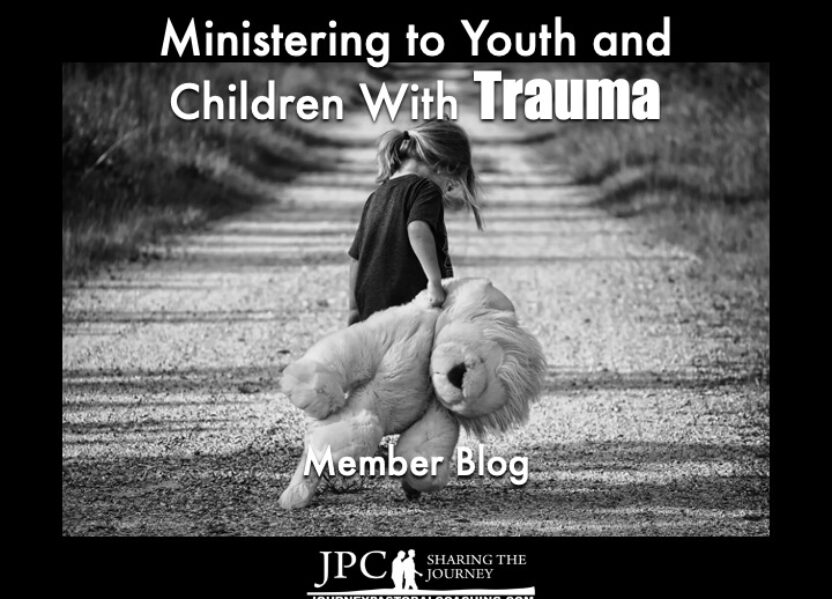Ministering to Youth and Children With Trauma – Member Blog
EDITOR’S NOTE: Hannah Horst serves as a US missionary and Orphan Care Chaplain with the Assemblies of God. You and your church can support this vital ministry as Hannah works to mobilize the church in ministering to these children at risk – simply click on the link to learn more or donate to her ministry: Hannah Horst Orphan Care Chaplain. Hannah, husband Brandon, and their four children live in the DC area, serving on the pastoral team of CentrePointe Church.
It’s inevitable. If you are in ministry, you will serve people from some hard places. It’s going to happen. There are people all around who have trauma in their stories. Whether it be minor, like divorced parents, surgeries or hospitalization while they are young, or major such as abuse or neglect. The body keeps the score, and it would benefit us all to understand what damage trauma does. We can join together science and the spiritual to make a greater impact on lives broken by trauma. But what does that look like?
In his book, “The Whole-Brain Child,” Dr. Dan Siegel talks about the brain as a house with an upstairs and downstairs. The upstairs brain (cerebral cortex) is where we do critical thinking and reasoning. The downstairs brain (limbic system) has our basic functions, including fight, flight, or freeze. Imagine a staircase (medial prefrontal cortex) between the upstairs and downstairs brains. When someone, especially a child, experiences trauma, the staircase is damaged. This causes them to have trouble moving from the downstairs brain (fight, flight, or freeze reflex) to the upstairs brain (critical thinking). They feel unsafe in situations, even if there is nothing to fear. They get stuck in their downstairs brain and start acting out. This is where confusing and even extreme negative behavior can come from. Karen Purvis from the Karen Purvis Institute of Child Development at Texas Christian University talks about something called “felt safety.” Just because someone IS safe doesn’t mean they FEEL safe.
So how can we minister to someone who doesn’t feel safe and has behavioral issues because of trauma? There are a few things we can do.
First, we must pray. Before we come to an interaction with someone with trauma, we have to pray. Everyone is made in the image of God, and when we pray and align our hearts with the Creator’s heart, we can see people through His eyes and not the eyes of the world (labels and behavioral issues). We need to see them with compassion and grace, not as a problem to be fixed.
Second, we must also remember that we bring our own emotions and experiences to every interaction. We must know how to manage our emotions and keep ourselves in check because if we don’t, we will add to the confusion and turmoil of those we are trying to minister to. When we do that, we break trust with that person. It is difficult to lead people down a healing path if we have not been down it ourselves. One of the most practical ways to do this is to watch your face and body language when interacting with someone. Even if we are frustrated, we must ensure that we communicate through our body language and facial expressions that they are heard, loved, and safe.
The third and most important thing to remember when ministering to people from hard places is nothing else matters without trust. Trust is the bridge that is built between two people. If we don’t have trust, we won’t be able to reach them. Troy Kemp, from the Ron Clark Academy, talks about five facets of trust; our trust level is as strong as our weakest facet. This is true for every relationship, not just with someone with trauma. First, there is clarity; are you being clear in your communication? Do people know what you expect from them? The second is connection; are you connecting well? Are you learning about their life and their story? Third is caring; do you truly care about them and their problems? Do you care about the little things as well as the big things? Fourth is consistency; are you continually showing up for them? Are you a stable presence in their life? And lastly, there is credibility; are you reliable? Are you following through and doing what you say you will? Do you practice what you preach?
It’s inevitable. We are going to, and we should, minister to people from hard places who have been through trauma, are broken, and are in pain. When we do, we must learn how to be a safe person for them and build the bridge of trust. Let us also remember that God can heal trauma. No one is too broken that God cannot restore them to wholeness.
If you want to learn more about ministering to kids and youth with trauma or even do a virtual training, reach out to Pastor Hannah Horst at chaplainhannah@gmail.com.
NOTE: Journey Pastoral Coaching exists to provide pastoral coaching to Millennial ministers.
Saddled with large student debt, just beginning to set up homes and start families, and serving in low paying first and second positions, Millennials are those who most desire but can least afford to pay for pastoral coaching.
We are able to do so thanks to the faithful and generous support of individuals and churches like yours who want to see young leaders not only enter the ministry, but remain in the ministry.
Now, more than ever, we need your help.
If you or your church would like to help Millennial ministers across the US and overseas build strong for a lifetime in ministry, please click here to support Journey monthly or with your one-time gift. Thank you.
We also invite you to click and subscribe to our twice-monthly blogs at journeypastoralcoaching.com



